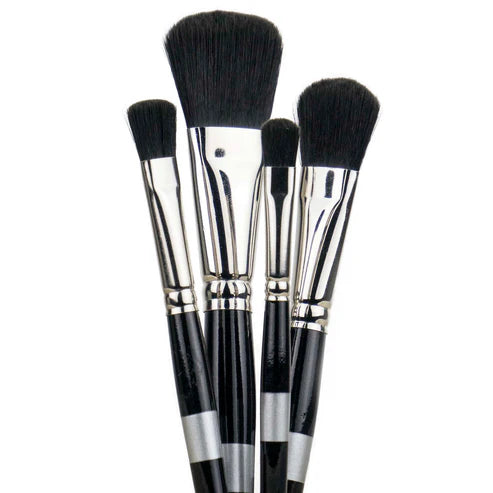Blending is an essential technique in the world of art. It's the magic that transforms colors and strokes into smooth gradients and transitions. And when it comes to blending, one tool stands out – the Mop brush. These versatile brushes are the secret weapon in an artist's arsenal for achieving seamless blends in various art mediums, including watercolors, oils, and acrylics. In this guide, we will delve into the art of blending with Mop brushes, providing you with tips, techniques, and examples to help you master this critical skill.
Understanding the Mop Brush
Mop brushes, characterized by their soft and fluffy bristles, are designed for maximum absorbency. They come in various sizes, and the bristles are made from synthetic fibers. The large, rounded shape of a Mop brush allows for generous water or paint retention, making them ideal for blending.
Choosing the Right Mop Brush
Selecting the right Mop brush is the first step in mastering blending. Consider the following factors:
- Bristle Material: Synthetic bristle Mop brushes are a durable, solvent-resistant, versatile, and budget-friendly choice for achieving optimal blending results with acrylics and oils. Unlike natural bristles, synthetic bristles are not as susceptible to damage from solvents and cleaning agents, making them a practical choice for oil and acrylic painters who need to clean their brushes frequently.
- Size: Selecting the appropriate Mop brush size is a critical aspect of mastering blending. Your choice should be guided by the specific needs of your artwork and the effect you want to achieve. When you opt for a larger Mop brush, you gain the advantage of covering a greater surface area with each stroke. This makes them ideal for creating expansive, sweeping blends in your artwork. On the other hand, smaller Mop brushes provide finesse and precise control over your blending. These brushes are perfect for intricate details, subtle gradients, or when you want to maintain distinct, smaller blending areas within your artwork.
- Handle Length: Short handles are great for precision in watercolor, while long handles offer versatility and control in oils and acrylics.
Blending Techniques
- Wet-on-Wet Technique: In watercolors, apply wet paint to a wet surface. Load your Mop brush with clean water and gently touch it to the painted area. The brush will absorb excess color, helping to blend and soften edges seamlessly.
- Dry Brush Technique: This technique is suitable for acrylic and oil paintings. Dab your Mop brush into a dry, soft cloth to remove excess paint, then gently blend edges and colors by using light, feathery strokes.
- Layering: Create multiple layers of transparent colors in watercolors, oils, or acrylics. Blend them together using the Mop brush, adding depth and richness to your artwork.
Tips for Successful Blending
- Keep your brushes clean. Rinse them thoroughly between color changes to prevent unwanted mixing.
- Vary the pressure you apply to the brush. Light pressure creates a subtle blend, while more pressure can lead to more dramatic blending.
- Experiment with different brush sizes to achieve the desired blending effect.
Examples of Blending with Mop Brushes:
- Watercolor Landscapes: Use a large Mop brush to create soft, seamless transitions in your landscapes, like blending the sky into the horizon or the merging colors of a sunset.
- Acrylic Portraits: Achieve realistic skin tones by blending acrylic paint on your canvas with a Mop brush. Smoothly transition from shadow to highlight for a lifelike effect.
- Oil Still Life: In oil paintings, Mop brushes can create soft backgrounds or blend colors in complex still life arrangements, giving your artwork a realistic touch.
Practice Makes Perfect
Mastering the art of blending with Mop brushes takes practice and experimentation. Start with small projects and gradually work your way up to more complex artworks. Remember that every artist has a unique style, so don't be afraid to develop your techniques and preferences along the way.
In conclusion, Mop brushes are an indispensable tool for artists looking to achieve seamless blending in watercolors, oils, and acrylics. With the right brush selection and blending techniques, you can take your artwork to the next level. So, grab your Mop brushes and start creating beautiful, blended masterpieces.





